
If you wanted to go to each autonomous community capital and visit their most emblematic monuments, where would you go? Some of these monuments are so important thanks to a general agreement, but the choice gets more complicated sometimes. This article includes the most important monument in the capital of the 17 Spanish autonomous communities.
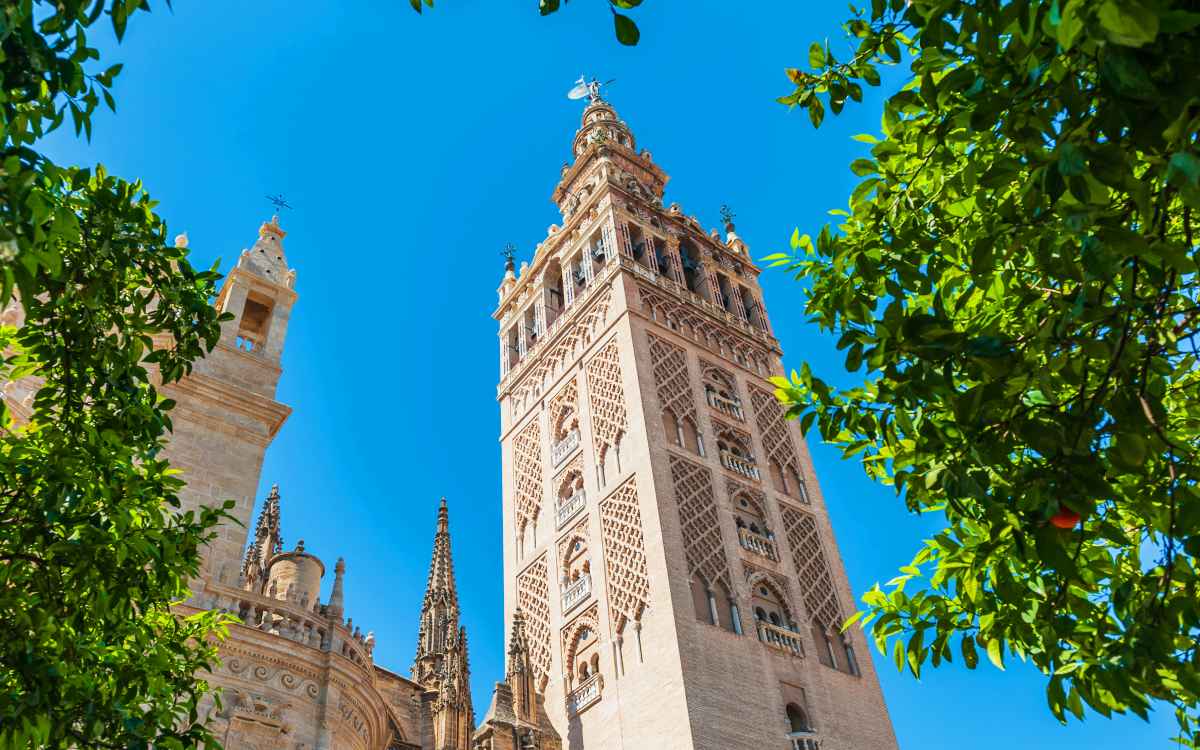
La Giralda. | Shutterstock
The indisputable importance of the Giralda as the most emblematic monument in Andalucía can’t be matched by any other monument. Erected near the impressive cathedral, this Mudéjar bell tower tells the story of this city, proves its beauty, and holds a place in the hearts of locals and visitors.
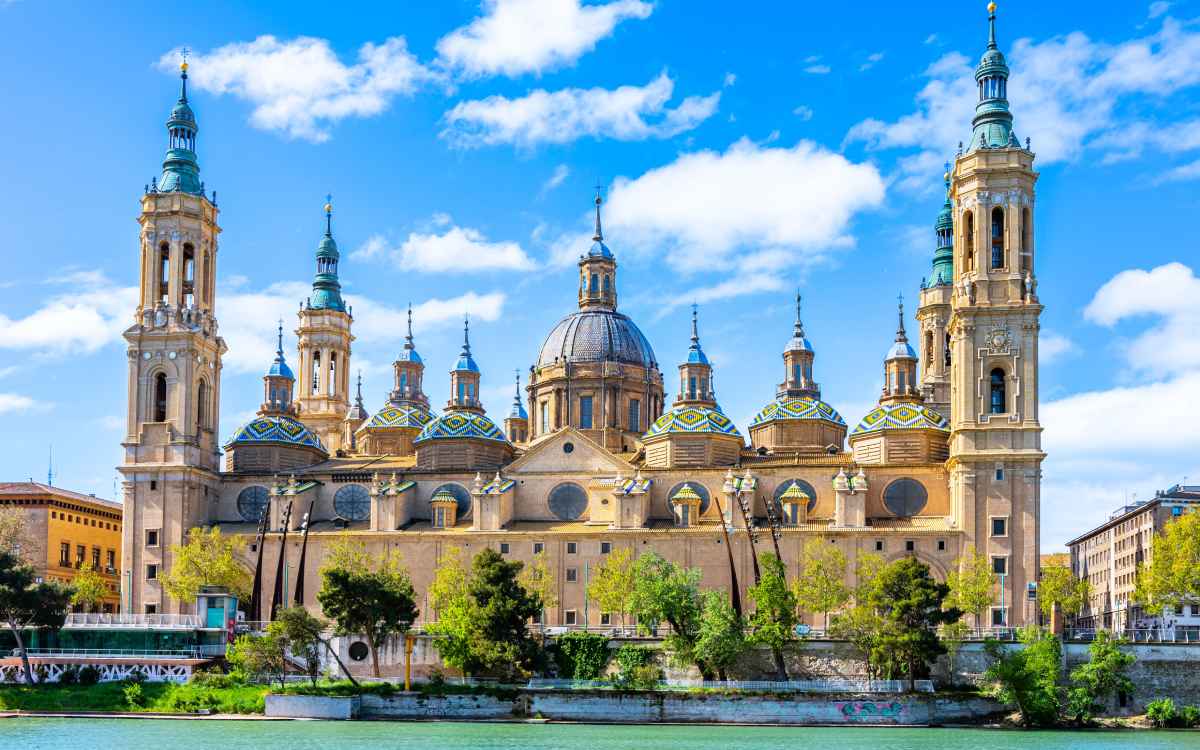
Cathedral-Basilica of Nuestra Señora del Pilar. | Shutterstock
The Cathedral-Basilica of Nuestra Señora del Pilar is another of those unquestionable icons. This temple was born as a Baroque building, inspired by Saint Peter in the Vatican itself. Its impressive dimensions show the ambition of this admirable temple, a centre of devotion and pilgrimage.
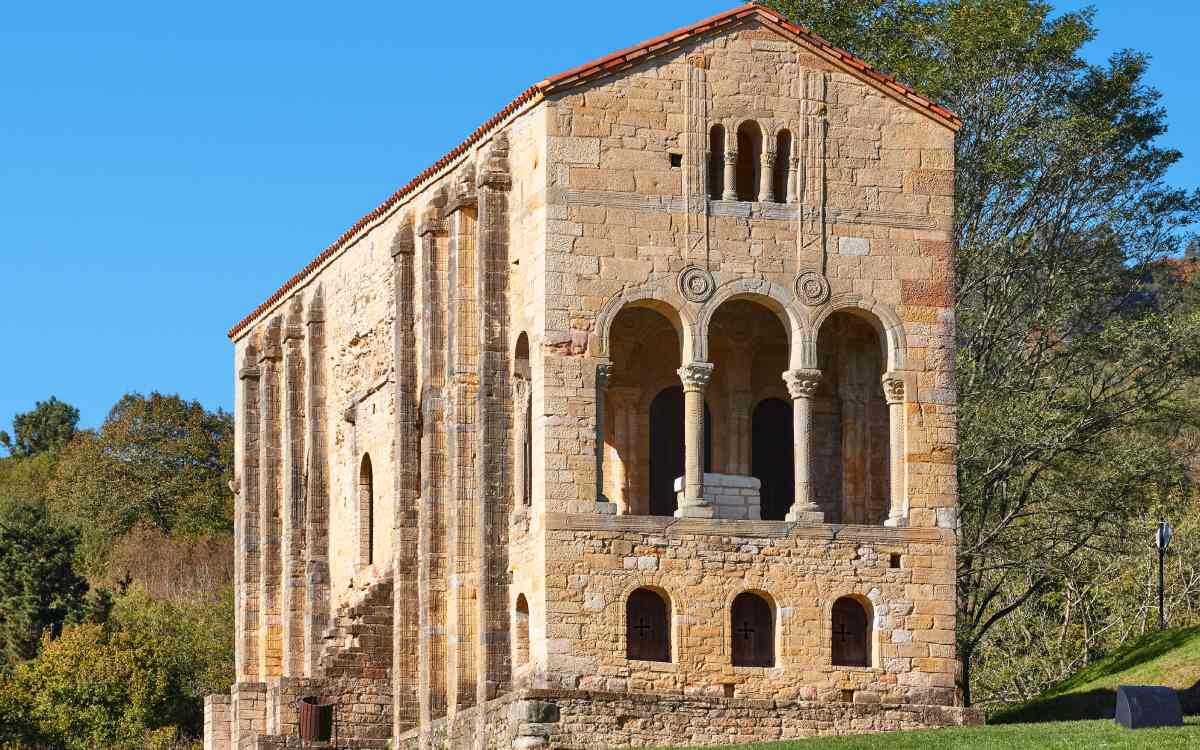
Santa María del Naranco. | Shutterstock
Although Oviedo has a marvellous cathedral, Santa María del Naranco is unique. Not only does this pre-Romanesque Asturian jewel prove the importance of the Kingdom of Asturias in the 9th century, but it’s also a true architectural masterpiece. Built as a royal palace, it became a church centuries later. Nowadays, it´s a declared UNESCO World Heritage Site.

Cathedral of Mallorca. | Shutterstock
The Cathedral of Mallorca stands out in the Balearic heritage. This massive Gothic gem of tall pinnacles faces the sea. Its façade is truly unforgettable, but so are its interiors. Its rose window is the largest in this kind of cathedral and creates a magical atmosphere with its colourful lights.
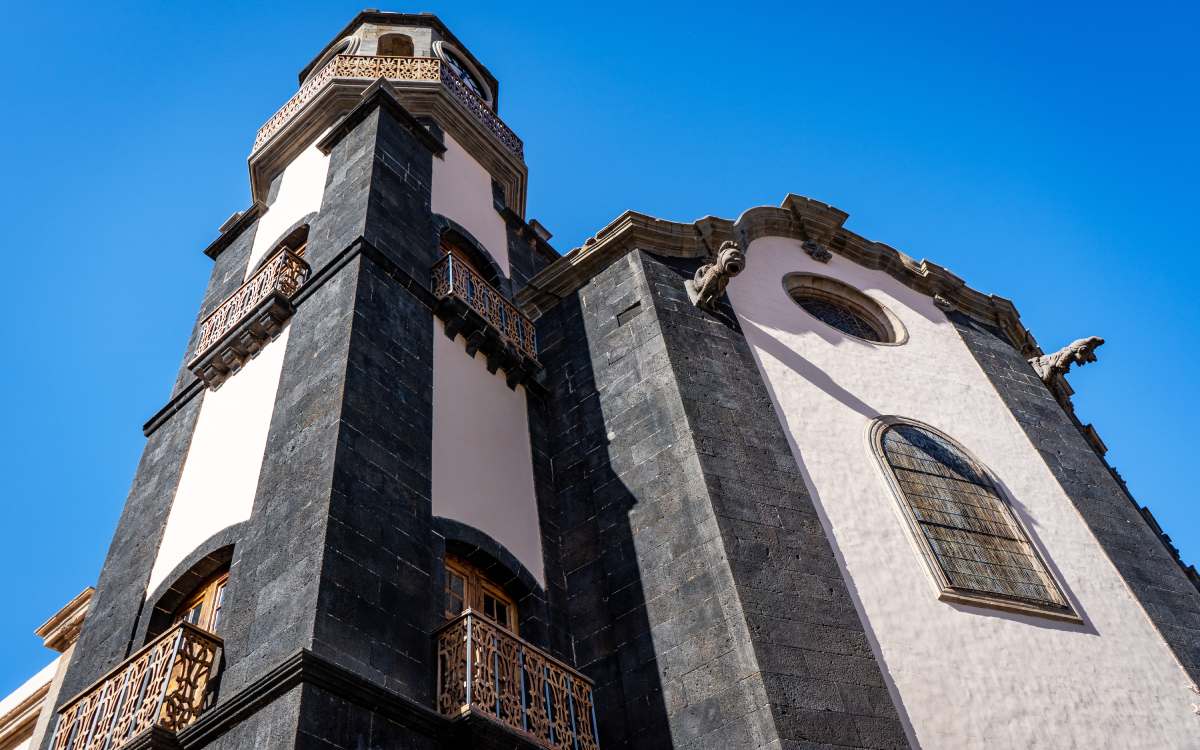
Nuestra Señora de la Concepción Church. | Shutterstock
Canarias is the only autonomous community to have two capitals, two beautiful cities with strong personalities. The Nuestra Señora de la Concepción Church is local history, the only one to have five naves in the whole of the archipelago.
Although the Cathedral of Las Palmas de Gran Canaria is extremely beautiful, the Castillo de Santa Catalina, or Castillo de la Luz, is the most emblematic monument in the city. It’s the oldest castle on these islands, built in the late 15th century. This building symbolises the difficulties locals had to overcome when pirates attacked them.

The Real Palacio de la Magdalena. | Shutterstock
The Cantabrian capital’s most important monument stands out from the others: it’s the Real Palacio de la Magdalena, a magnificent example of popular architecture. It was built between 1909 and 1911 for Alfonso XIII’s family, who used it as a holiday home. The English influences of the complex are obvious. The building’s sharp roofs make it one of the most unconventional monuments on this list.
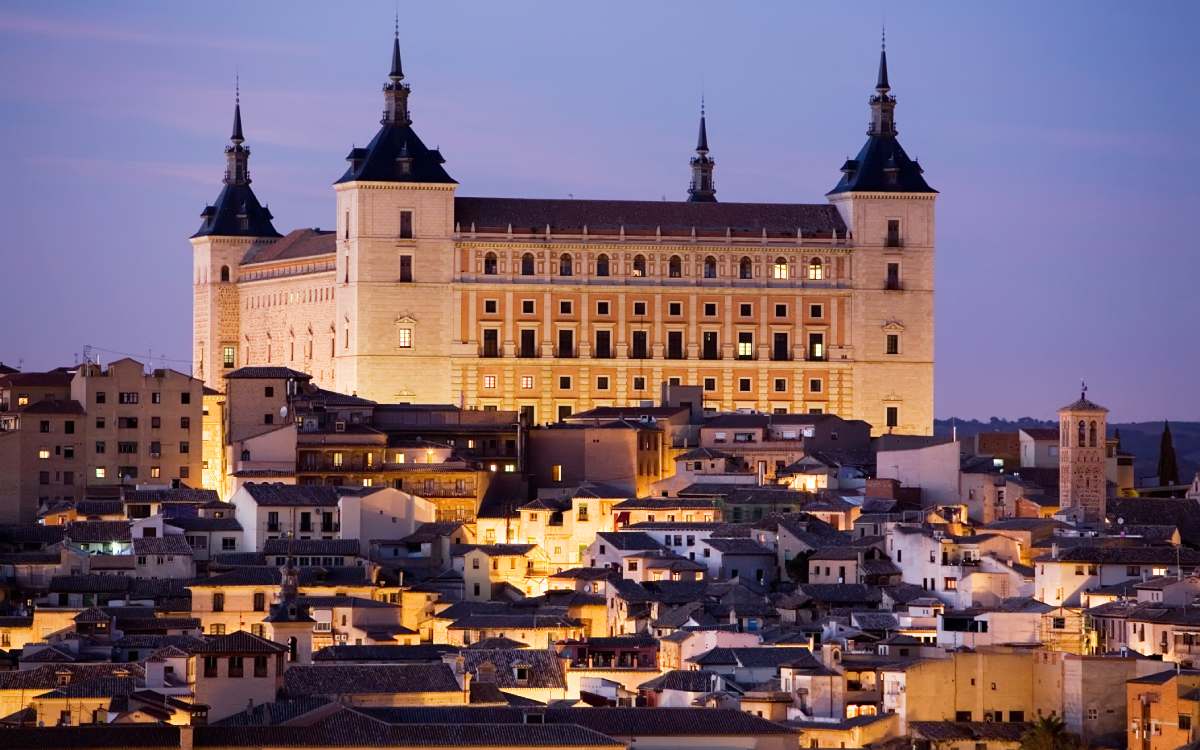
Alcázar of Toledo. | Shutterstock
Toledo is one of those gorgeous cities that takes every breath away. It has many gems, but one of them shines even brighter on the horizon: its magnificent Alcázar. The Alcázar of Toledo is a fascinating historical overview. Both impressive and harmonious, its shape combines the military robustness of its towers with the elegance of its characteristic spires.
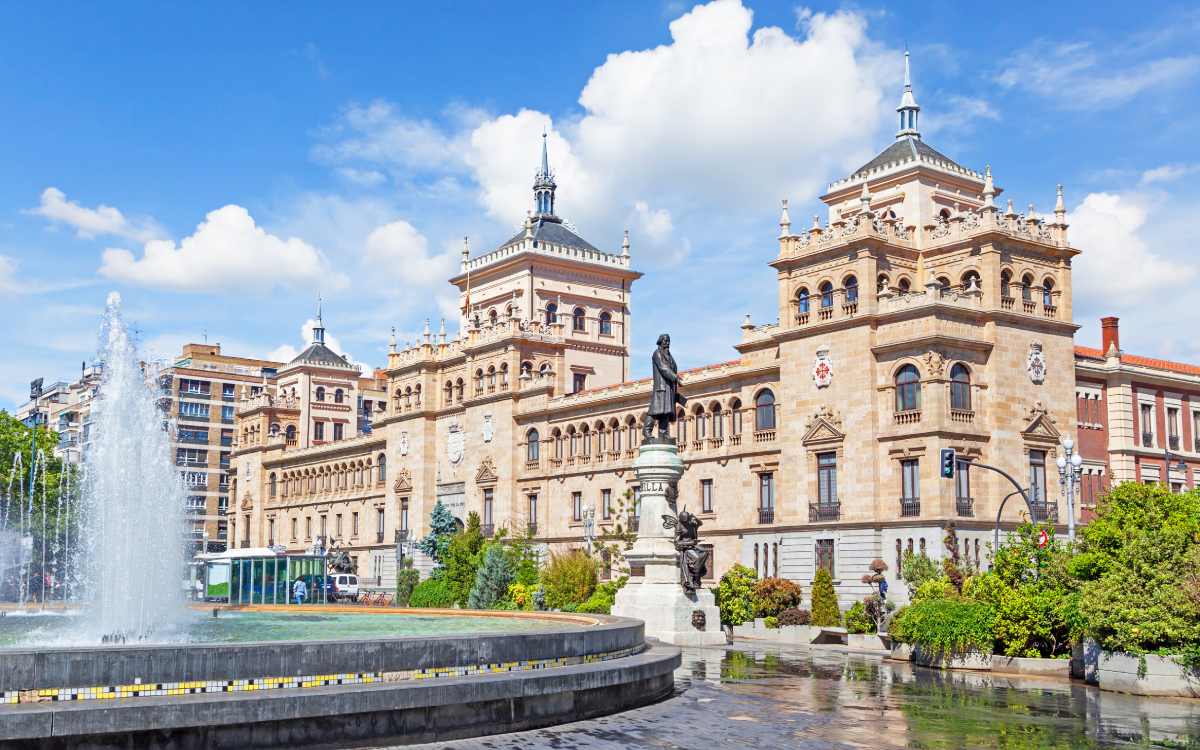
Academia de Caballería. | Shutterstock
Built less than a century ago, the Academia de Caballería has everything the great Renaissance palaces have. Its epic monumentality and its strategic combination make this eclectic building one of the most important buildings in Valladolid, a place that is known for its many masterpieces.
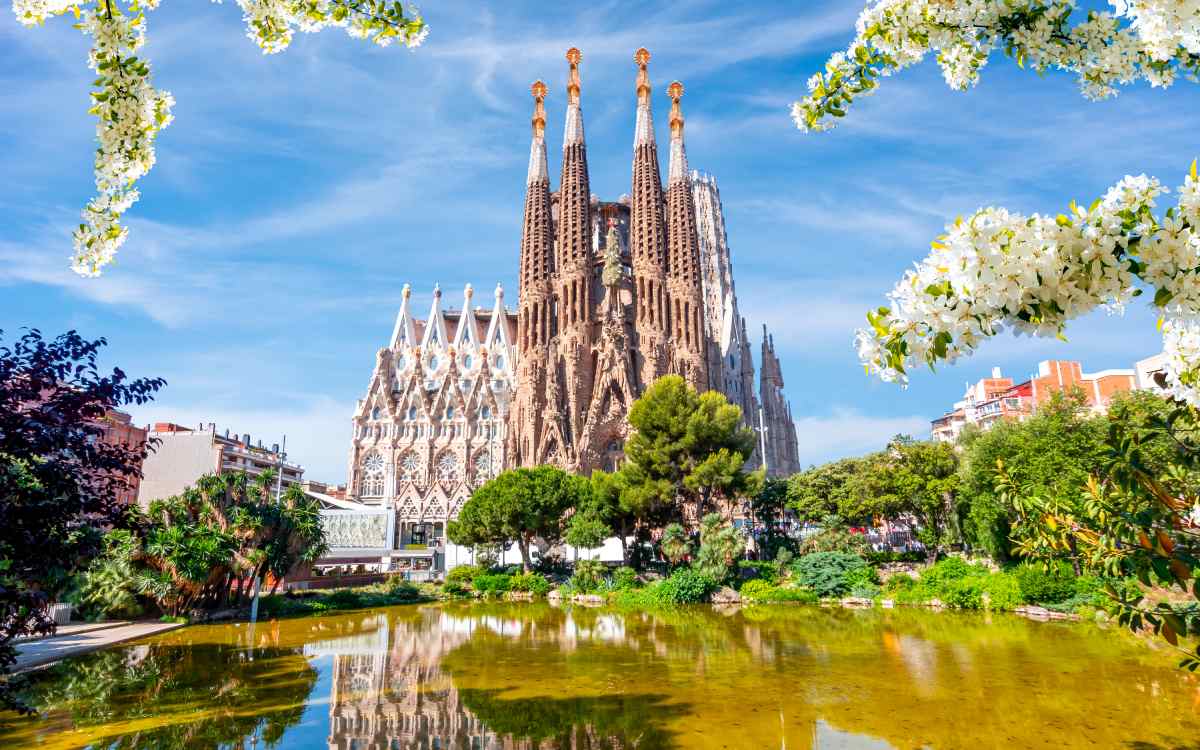
Sagrada Familia. | Shutterstock
If there is an architect who has contributed to Barcelona’s fame, it’s Gaudí. And the Sagrada Familia is his masterpiece. Spain’s most visited monument has a unique charm because it is still under construction. Its unmistakable silhouette has charmed whole generations of tourists.
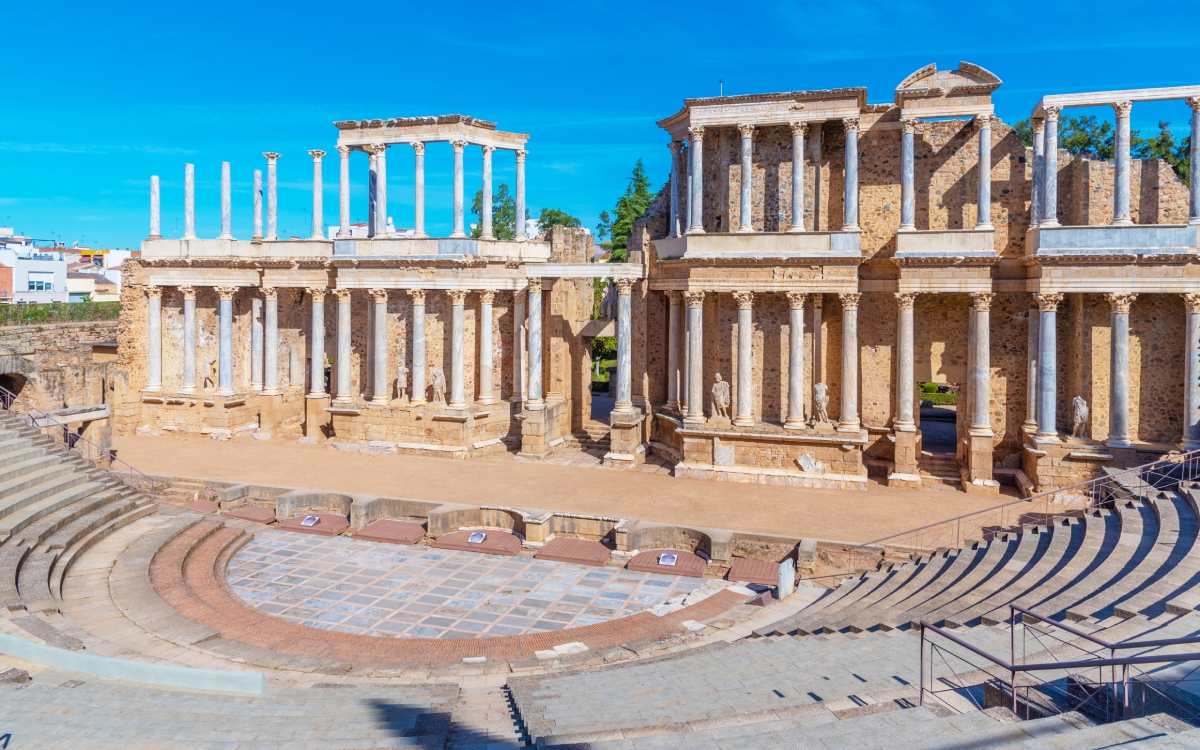
Roman Theatre of Mérida. | Shutterstock
The mere name of Mérida evokes its Roman theatre, the greatest symbol of this city and of the Roman legacy. The past glory of the old Augusta Emerita, now the capital of Extremadura, shines as brightly as it can in this well-restored place, which was declared a World Heritage Site in 1993.
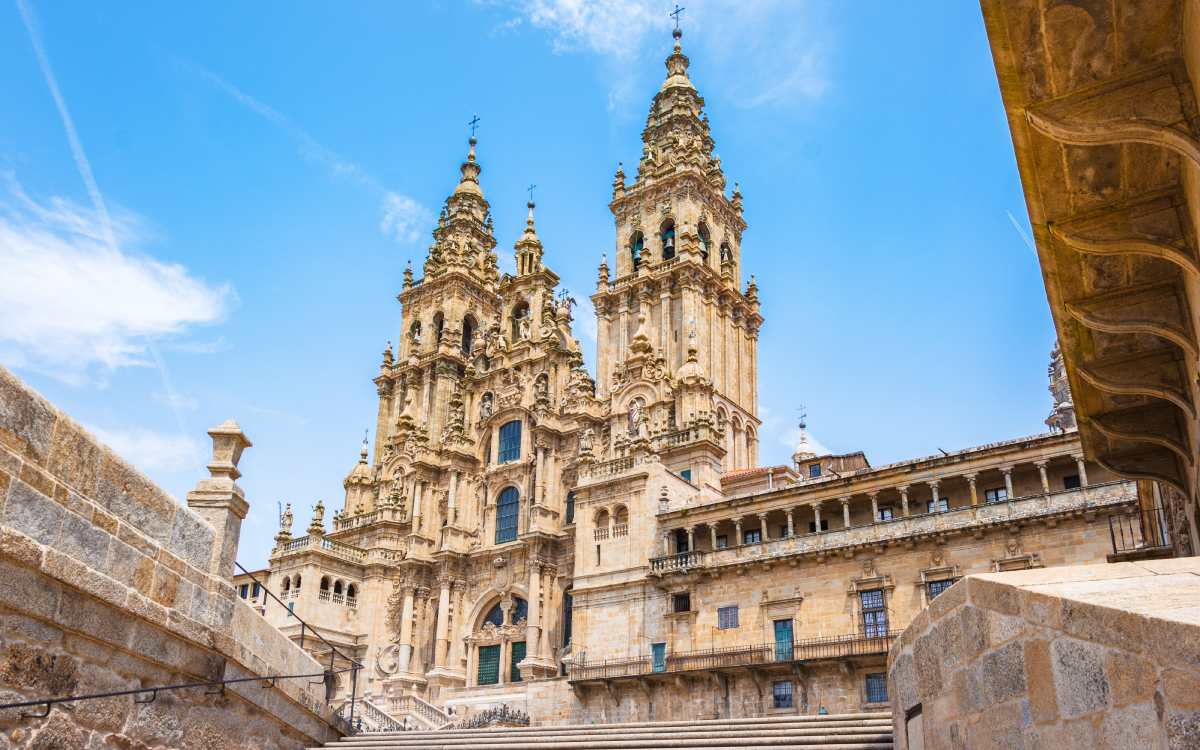
Cathedral of Santiago de Compostela. | Shutterstock
This is the only monument that attracts people from all over the world who walk kilometres to reach it. The Cathedral of Santiago de Compostela stands in the Plaza del Obradoiro and fuels people’s fervour like no other place.
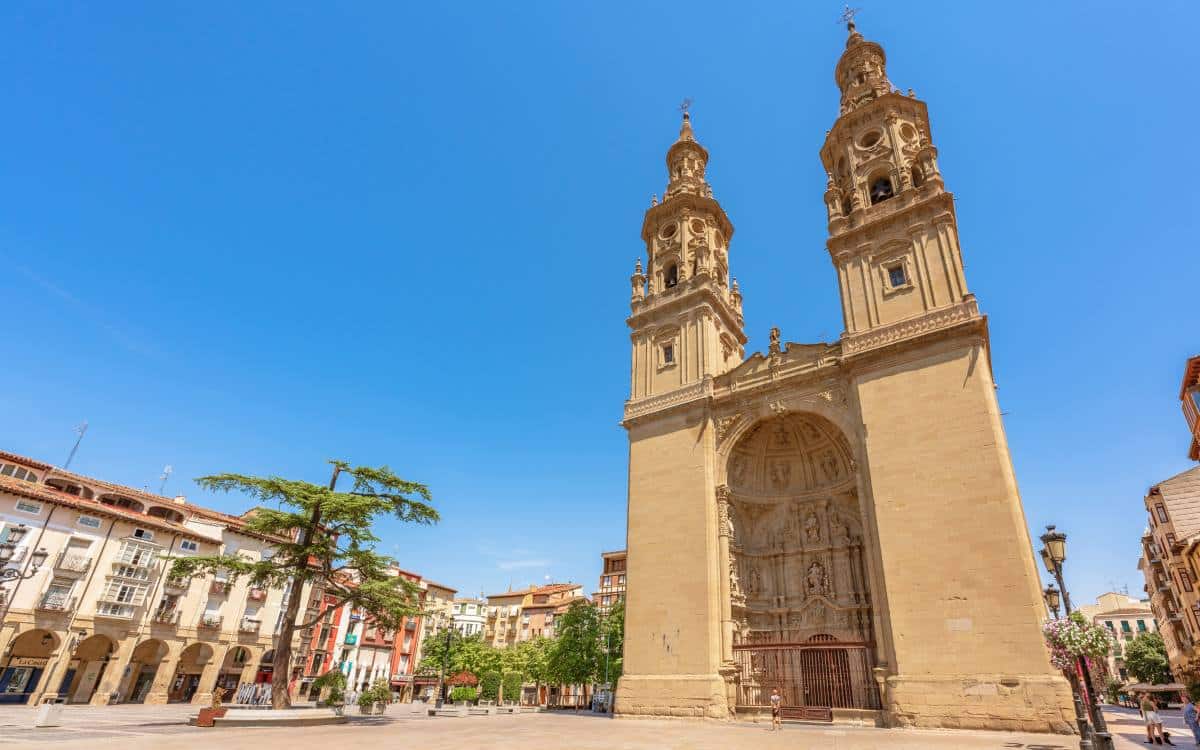
Co-cathedral of Santa María de la Redonda. | Shutterstock
The Co-Cathedral of Santa María de la Redonda is Logroño’s best distinguishing mark, a majestic presence in the heart of the town. Its twin towers are its most eye-catching element, but the building also hides a tiny painting indoors, the Calvario de La Rioja, attributed to Miguel Ángel Buonarroti.
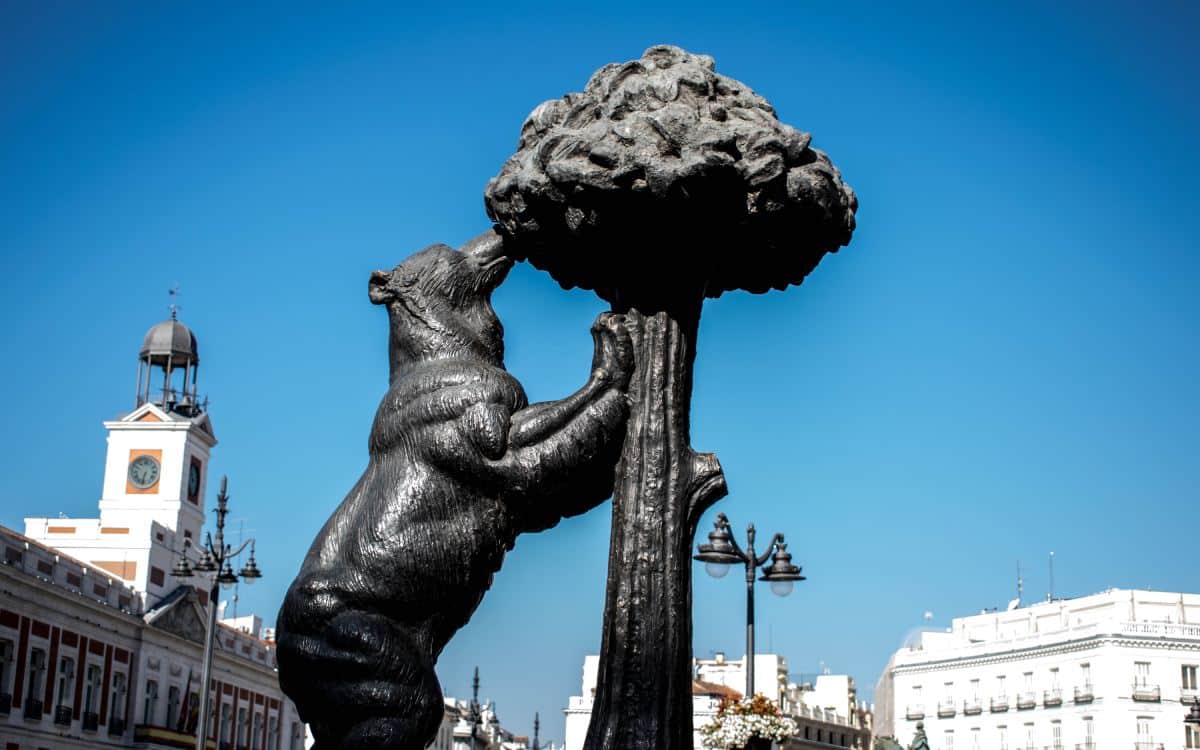
Statue of El Oso y el Madroño. | Shutterstock
It’s interesting that Madrid is the only capital whose most emblematic monument is a sculpture. Besides, it’s not particularly large. El Oso y el Madroño is a crucial part of Madrid’s identity. For this reason, it’s one of the most photographed spots in Puerta del Sol. That is the great power of this bronze animal.

Cathedral of Santa María. | Shutterstock
The Cathedral of Santa María is the most beautiful corner of the city of Murcia. Its façade is a gem of architectural harmony, a Baroque Spanish masterpiece. Meanwhile, its bell tower is a wonder itself and reaches 93 metres in height.
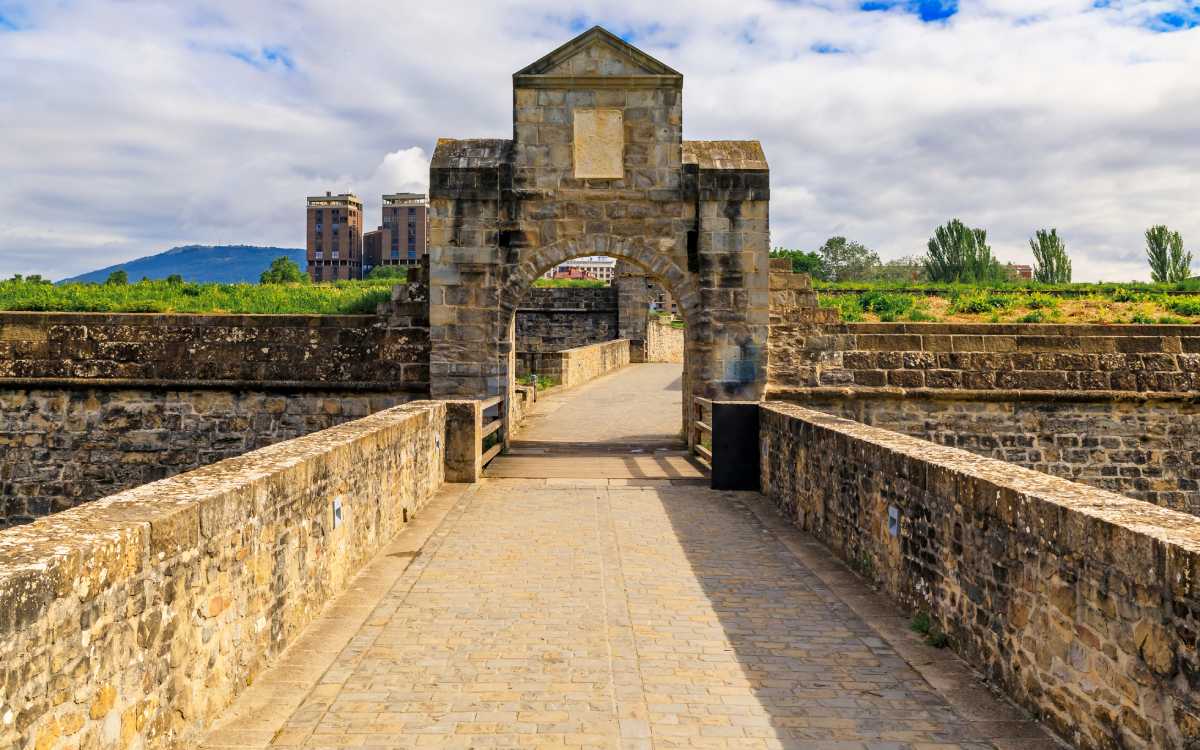
Citadel of Pamplona. | Shutterstock
The Citadel of Pamplona is the symbol of a greatly green city. Now it is a very crowded park, but it used to be an elegant Renaissance fortress. Navarra has changed the meaning of its landmark, leaving behind its military intention and turning it into a space that combines culture and nature.
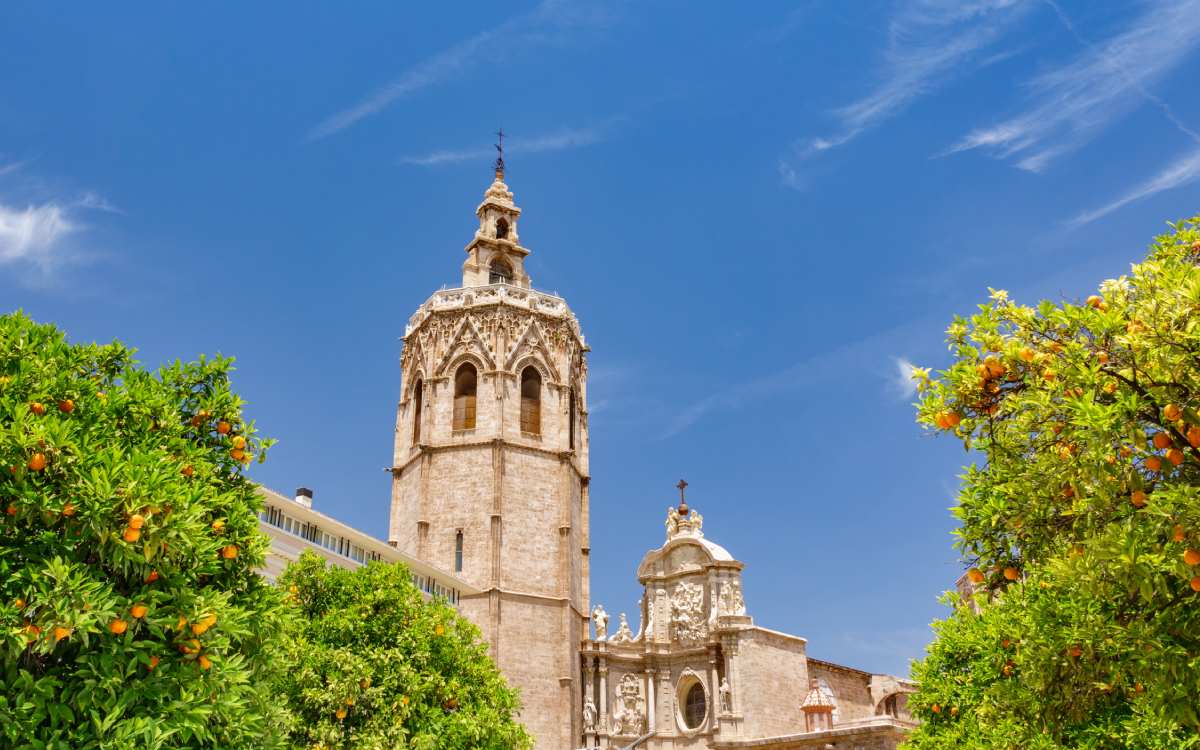
Torre del Micalet. | Shutterstock
The sensational cathedral of Valencia gathers the essence of the city, but that essence is more evident in its bell tower. The Torre del Micalet, or Torre del Miguelete, is a complex Gothic building that used to stand on its own. Later, it joined the cathedral, creating a structure that holds a special place in the hearts of everyone in Valencia.
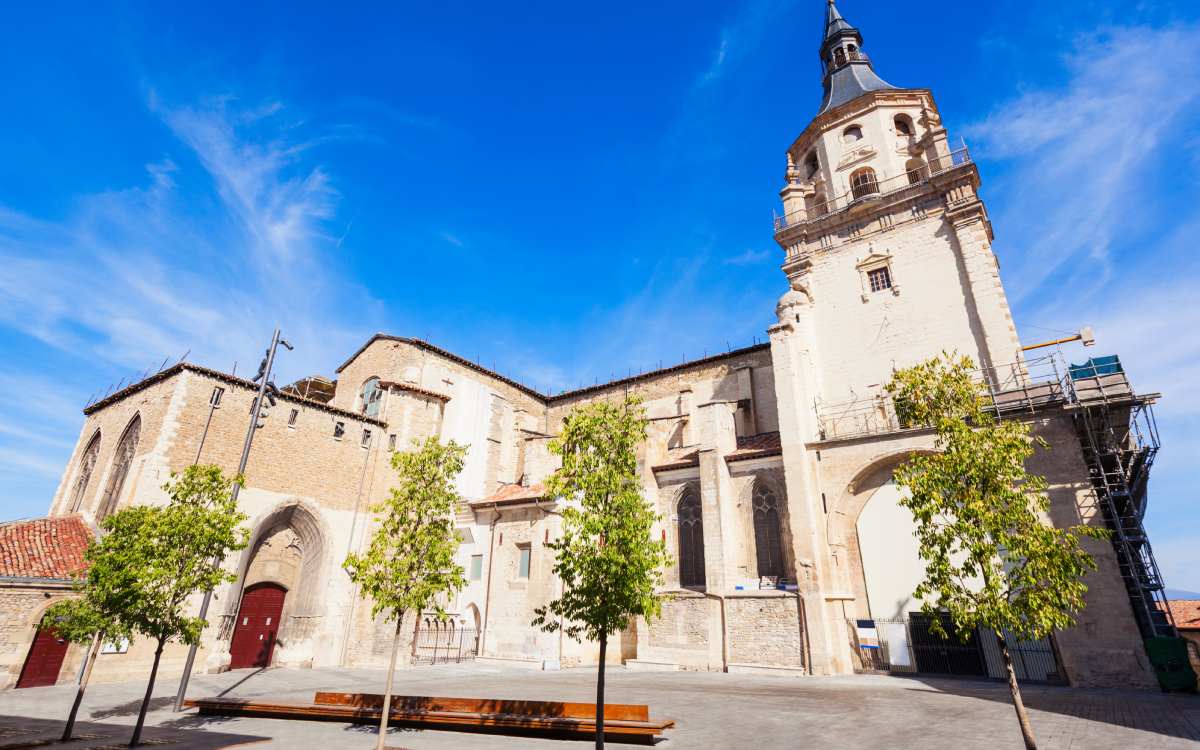
Cathedral of Santa María. | Shutterstock
The Cathedral of Santa María might not be as famous as the Catedral Nueva, but it’s an extremely important element of the Basque capital. It stands in the heart of Vitoria-Gasteiz, and although there have been many problems with the building since its construction, it has been so well restored that it has earned many prestigious awards.
This is our last stop on this route of some of the most representative monuments of the capital cities of Spain. Their architecture takes us back to the past and allows us to understand both the roots of the cities they lie in and their current reality. A journey through the rich geography of a country filled with treasures, some of them less known than others.
You can also read this article in Spanish here.
Follow us on Facebook!